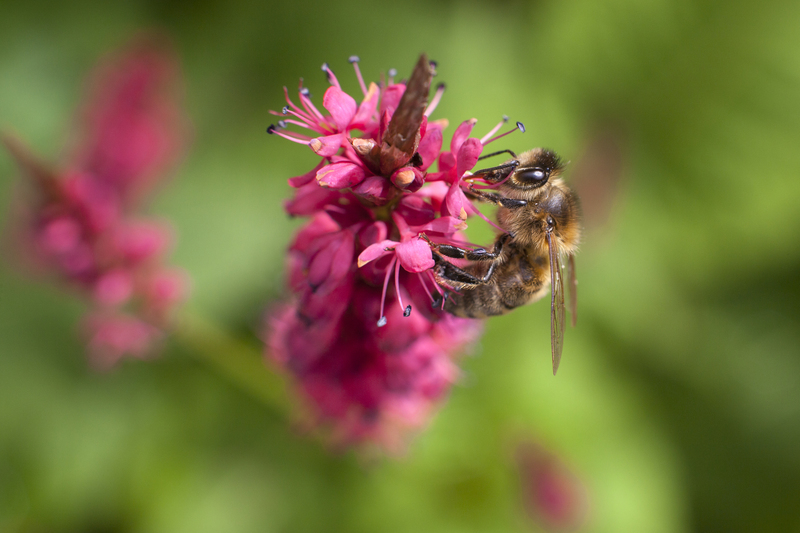Hedge Trimming: Turn Ordinary Hedges into Living Sculptures
Posted on 31/05/2025
Hedge Trimming: Turn Ordinary Hedges into Living Sculptures
When you walk past a beautifully sculpted hedge, whether it's a whimsical spiral or a stately rectangle, it's hard not to admire the artistry and precision involved. Hedge trimming is more than just a basic garden chore; it's a creative process that transforms ordinary greenery into breathtaking living sculptures. In this comprehensive guide, we delve into the techniques, tools, benefits, and inspiration behind hedge shaping, offering actionable advice for both novice gardeners and experienced landscape artists. Discover how to unlock the hidden potential in your own garden hedges and turn them into stunning works of natural art.
Why Hedge Trimming Matters
Proper and regular hedge maintenance does more than enhance the aesthetics of your garden; it promotes plant health, increases privacy, and even boosts property value. Whether you're shaping boxwood, privet, yew, or laurel, mastering hedge grooming techniques can entirely transform your outdoor space.
Key Benefits of Well-Trimmed Hedges
- Healthier Growth: Removing dead or diseased branches encourages new, vigorous shoots.
- Enhanced Appearance: Sharp, clean lines or intricate designs add visual interest and curb appeal.
- Increased Privacy & Security: Neat hedges form effective, dense barriers.
- Pest & Disease Control: Regular inspection during trimming helps identify issues early.
- Property Value: Immaculately sculpted hedges enhance a garden's reputation and real estate appeal.

Must-Have Tools for Hedge Shaping
Before diving into hedge pruning, it's essential to use the right tools to ensure clean cuts and uniform shapes. Here's a quick rundown of the best implements for every gardener:
- Manual Hedge Shears: Ideal for precision trimming and defining outlines.
- Electric or Cordless Trimmers: Perfect for large areas and consistent topiary shapes.
- Loppers: Needed for thicker branches, giving better leverage and clean cuts.
- Pruning Saws: For tackling old, woody stems or major reshaping efforts.
- String and Stakes: Indispensable for ensuring perfectly straight lines.
- Protective Gear: Safety goggles, gloves, and sturdy clothing are vital for safe hedge maintenance.
Pro Tip: Always keep your blades sharp. Dull tools can tear foliage instead of cutting it cleanly, resulting in unhealthy, ragged growth.
Understanding Different Types of Hedges
Not all hedges are created equal. The species you select and their natural growth habits will affect your approach to hedge clipping and artistic shaping. Here's an overview of popular hedge varieties and their unique qualities:
Formal vs. Informal Hedges
- Formal Hedges: These are typically shaped into geometric patterns or straight lines. Common species include boxwood (Buxus sempervirens), yew (Taxus baccata), and some varieties of privet (Ligustrum).
- Informal Hedges: Allow for a more natural, flowing shape. Popular species include hawthorn, holly, and forsythia.
Evergreen vs. Deciduous Hedges
- Evergreen Hedges: Stay lush year-round, offering consistent screening and design opportunities.
- Deciduous Hedges: Tend to grow faster and can be shaped dramatically during the dormant season, but lose their leaves in winter.
The Art of Creating Living Sculptures
Transforming a typical hedge into a living sculpture--also known as topiary--requires creativity, patience, and skill. Here's how to get started:
Basic Steps of Topiary Shaping
-
Choose the Right Plant:
- Boxwood and yew are classic choices for small, detailed shapes.
- Privet and holly suit larger, bolder designs.
-
Plan Your Shape:
- Sketch your design on paper or use a wire frame as a guide.
- Start with simpler shapes like spheres, cubes, or cones.
-
Initial Rough Trimming:
- Remove bulk material to outline the general shape.
- Step back often to check overall symmetry.
-
Refine and Perfect:
- Use fine shears for detailed sculpting.
- Trim regularly throughout the growing season to maintain definition.
Creative Hedge Shaping Ideas
- Animal Forms: Rabbits, birds, or even mythical creatures delight children and adults alike.
- Geometric Patterns: Spirals, spiraling cones, or carefully clipped mazes create a dramatic statement.
- Themed Installations: Arched entrances, initials, or symbolic designs lend personalized charm to your garden.
Proven Techniques for Precision Hedge Trimming
Achieving that crisp, professional look is all about technique. Here are key hedge trimming tips for perfection:
- Trim in Dry Weather: Wet conditions can promote the spread of disease and result in untidy cuts.
- Cut at an Angle: Always shape the hedge so it's slightly wider at the base. This allows sunlight to reach all parts of the plant.
- Use a Guide: For formal shapes, stretch string between two stakes to mark a straight line.
- Step Back Often: Regularly assess your work from a distance to ensure symmetrical results.
- Don't Over-Prune: Remove only a third of the plant's growth at a time to avoid undue stress.
Common Mistakes to Avoid
- Cutting Into Old Wood: Some species, like yew, tolerate deep cuts, while others, such as boxwood, may not regenerate from old wood.
- Ignoring Plant Health: Always sanitize your tools to prevent disease spread.
- Unbalanced Profiles: Always maintain consistent thickness and symmetry for best visual impact.
Perfect Timing: When to Trim Hedges
The best period for hedge maintenance varies depending on the plant species and your regional climate. However, general timing guidelines are:
- Formal Hedges: Early spring (before strong growth begins) and again in late summer for light touch-ups.
- Flowering Hedges: Immediately after flowering to avoid cutting next year's buds.
- Evergreens: Trim in late spring or early summer to encourage dense growth.
Tip: Avoid heavy cutting just before winter. Exposed cuts can be susceptible to frost damage in cold climates.
Caring for Your Sculpted Hedges
Once you've shaped your hedges into works of art, continued care is critical for long-term beauty. Consider these aftercare tips for thriving, healthy sculptures:
- Regular Watering: Especially important during dry spells and for newly shaped plants.
- Mulching: Retains moisture and deters weed competition around your hedge base.
- Feeding: Use a slow-release, balanced fertilizer in the spring for lush, vigorous growth.
- Pest & Disease Checks: Inspect leaves and stems regularly for early signs of trouble.
Advanced Topiary: Taking Hedge Art to the Next Level
Once comfortable with basic forms, ambitious gardeners can explore advanced hedge trimming methods, such as:
- Multi-tiered Designs: Layered patterns, wave effects, or cloud pruning techniques for dynamic movement.
- Wire Frames: Shaping hedges over custom frames to encourage intricate animal or character figures.
- Espalier and Fan-Trained Hedges: Perfect for maximizing space along walls or fences.
- Living Tunnels and Arches: Create enchanting pathways and secret garden entrances.
Don't be afraid to experiment! Topiary is a living art form, and every design reflects your individual style.
Hedge Trimming Safety: Tips and Precautions
Every artist needs to mind their safety. Follow these precautionary steps:
- Use Sturdy Ladders: Always place them on flat, stable surfaces when shaping tall hedges.
- Wear Gloves and Goggles: Protect your hands and eyes from scratches and flying debris.
- Check for Wildlife: Before cutting, inspect for bird nests, small mammals, or beneficial insects.
- Store Tools Properly: Keep sharp implements out of reach of children and pets.
Inspiring Examples: World-Famous Living Sculptures
Looking for inspiration to fuel your imagination? Here are some of the most iconic and awe-inspiring hedge sculpture gardens worldwide:
- Levens Hall (UK): Home to the world's oldest topiary garden, featuring elaborate geometric and animal designs since the 1690s.
- Marqueyssac (France): Boasts more than 150,000 hand-clipped boxwood bushes, shaped into undulating waves and organic patterns.
- Longwood Gardens (USA): Offers stunning examples of intricate patterns and living architecture in its historic topiary garden.
- Palacio de Mateus (Portugal): Renowned for its majestic, symmetrical yew hedges.

Frequently Asked Questions about Hedge Shaping
-
How often should I trim my hedges?
For fast-growing species, light trims every 4-6 weeks during the growing season keep shapes crisp. Slower growers may need only 2-3 trims a year. -
Which hedges are best for intricate sculptures?
Boxwood and yew are top choices due to their dense growth and tolerance to hard pruning. -
Can I revive an overgrown hedge?
Yes, many varieties respond well to renovation pruning, especially in late winter/early spring. Patience is key--it may take a season or two for full recovery.
Conclusion: Make Nature Your Canvas
From humble boundary lines to jaw-dropping garden masterpieces, hedge trimming offers endless possibilities for creativity, privacy, and natural beauty. Turn your ordinary hedges into living sculptures through regular pruning, thoughtful design, and a touch of imagination. With the right knowledge, careful planning, and a little inspiration, you can create a unique outdoor space that is both functional and artistically stunning.
Ready to begin your topiary adventure? Equip yourself with quality tools, choose the ideal hedge species, and let your garden express your artistry--one precise trim at a time!

